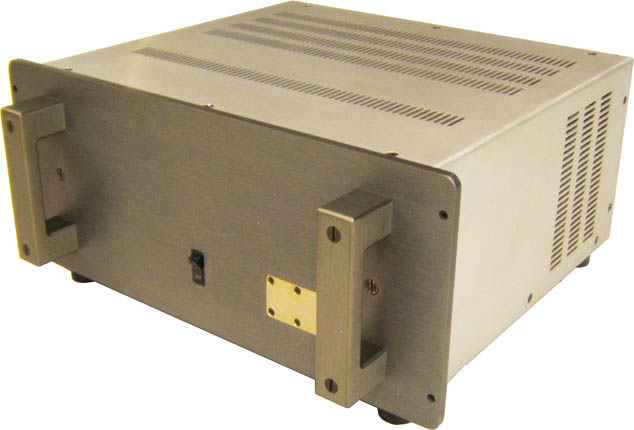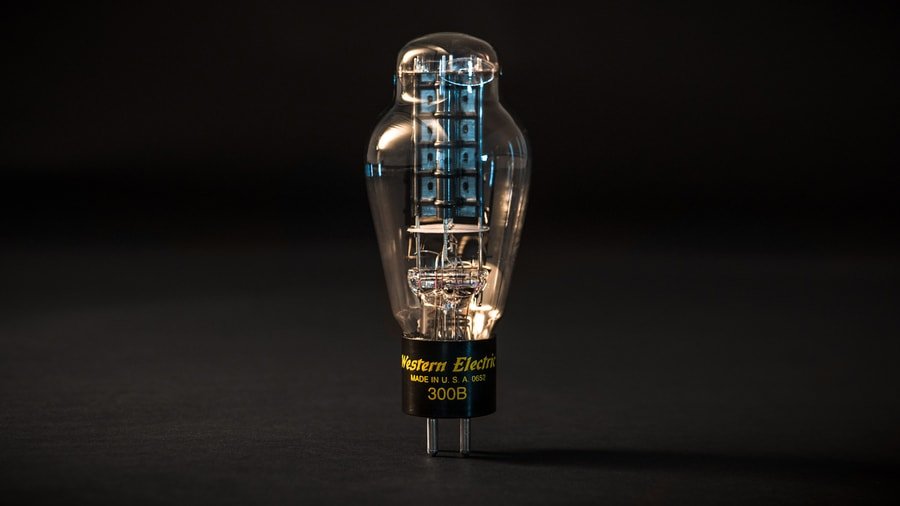Valves or solid-state? Solid-state or valves? The question that is always getting brought up in audio circles. Ian Ringstead looks at a bit of the history and some of his preferences.
I was born in the fifties when valves were the norm for electronics, but by the sixties a new kid on the block came into town called the transistor and that changed our way of thinking and listening. As long as I have been involved in hifi the debate over whether valves are better than transistors (or vice verse) has gone on and is still a contentious issue to this day.
When I was eight years old (1964) my parents bought a Pye Black Box stereogram which had a valve amplifier and that was not unusual, but around the corner the transistor was about to burst onto the scene and revolutionise electronics completely. I remember the valve amp well and as a curious youngster had the unit in bits to see how it worked and tinker with it. My knowledge of electronics then was limited, but it didn’t stop me messing! My next experience of a valve amp was my sister’s boyfriend’s hifi amp during a summer break when he brought it to our house. It was a Tripletone unit and, as it was a decent upgrade on the Pye unit and a true separate amp, I had a very enjoyable summer playing with it. 
When I bought my first amp in 1972 it was a cheap transistor unit as valves had all but died out by then, but it wasn’t brilliant. Over the years I made continual changes to my system and all the amps were transistor based. I had the Meridian 101 pre amp and 103 power amp, which for the seventies was an exciting new design and served me well for a few years. I moved onto a Musical Fidelity Dr Thomas power amp and used a Yamaha pre amp as I couldn’t afford the Musical Fidelity pre amp. These amps were classic AB designs (see more about this later) but then in the early eighties a company called Krell changed our way of thinking and the KSA50 Class A amp turned the industry upside down and caused a lot of excitement and controversy. Designs like the Naim 250 were looked upon as the reference standard here in the UK, but Krell transformed all that and I was so excited when a customer of mine bought a KSA50 and brought it into the shop for us to listen to. Well it certainly divided opinions, but I loved it. Class A wasn’t new of course, after all Sugden were great protagonists of it, but it didn’t come cheaply. Class AB still proved the most popular and affordable route in the eighties, but then valve amps started becoming popular again. 
The thing with valve amps was they were expensive and cost a lot more than most decent transistor amps. Size and heat was another issue. The output transformers required by a valve amp meant they were heavy, bulkier and more expensive to manufacturer, not forgetting that valves were very hot in use and so not domestically acceptable to many people. I went to a show where when I walked into the room there was a very large and exotic SET valve amp and whilst it sounded great, it produced so much heat in the smallish room on a hot summer’s day that I couldn’t bear to stay in there for long at all. I have to say this alienated me against valve amps as being impractical in a domestic situation, but it didn’t stop me admiring their sound. Audio Research is a legendary American valve amp company and every time I’ve heard their amps at shows they have sounded sublime, but the problem for me was their price! Oh well a lottery win maybe.
Valve amps in the eighties had an issue; reliability could rear its ugly head. Unless welldesigned and quality components were used, they could fail more easily than transistors and valves inherently wear out and have a limited life. The valve amps we used to sell in the eighties were good, but they were expensive and inevitably often broke down. This doesn’t mean transistor amps were sonically superior; just that they tended to be more reliable in use than their valve counterparts and as a retailer the last thing you wanted was an unreliable product, so we therefore shied away from valves for some years.
Not all amplifiers are the same and there is a clear distinction made between the ways their output stages operate. The main operating characteristics of an ideal amplifier are linearity, signal gain, efficiency and power output, but in real world amplifiers there is always a trade off between these different characteristics. Generally, large signal or power amplifiers are used in the output stages of audio amplifier systems to drive a loudspeaker load. A typical loudspeaker has a nominal impedance of between 4Ω and 8Ω, thus a power amplifier must be able to supply the high peak currents required to drive the low impedance speaker.
A Little About Amp Classes
One method used to distinguish the electrical characteristics of different types of amplifiers is by “Class”, and as such amplifiers are classified according to their circuit configuration and method of operation. Amplifier classes represent the amount of the output signal which varies within the amplifier circuit over one cycle of operation when excited by a sinusoidal input signal. The classification of amplifiers ranges from entirely linear operation (for use in high-fidelity signal amplification) with very low efficiency, to entirely non-linear (where a faithful signal reproduction is not so important) operation, but with a much higher efficiency… whilst others are a compromise between the two.
Amplifier classes are mainly lumped into two basic groups. The first are the classically controlled conduction angle amplifiers forming the more common amplifier classes of A, B, AB and C, which are defined by the length of their conduction state over some portion of the output waveform, such that the output stage transistor operation lies somewhere between being “fully-ON” and “fully-OFF”.
The second set of amplifiers are the newer so-called “switching” amplifier classes of D, E, F, G, S, T etc, which use digital circuits and pulse width modulation (PWM) to constantly switch the signal between “fully-ON” and “fully-OFF” driving the output hard into the transistors saturation and cut-off regions. The most commonly constructed amplifier classes are those that are used as audio amplifiers, mainly class A, B, AB and C and to keep things simple.
Back To Transistor Amps
American companies like Mark Levinson, Jeff Rowland, Boulder etc. have certainly impressed me, but once again their quality doesn’t come cheap. About ten years ago I discovered a new type of transistor amp design called class D. The company was Flying Mole, a Japanese offshoot of engineers who had worked for Yamaha. Here was a new design that was compact, powerful and very efficient. I heard the CAS10 model at Heathrow and I was immediately impressed, so much so that I purchased one. This was a lovely, compact, beautifully made integrated amp that was very clean sounding and detailed, but the press were divided, either praising it highly or being ambivalent. I personally really liked it and so did my friends, but class D was new then and it has taken a few years for it to be accepted as an alternative approach. Needless to say Audio Research, Jeff Rowland and a lot of other companies now use this design in some of their models. It’s a design that has been refined and adapted in many ways by several companies and I believe is a brilliant addition at a cost effective starting point, although some of the designs now aren’t cheap, but certainly really deliver sonically. Class D has been adopted as a real alternative for many products in hifi, especially active sub woofers and active speakers because of their compactness and efficiency. Also they run fairly cool which is a real bonus and are cheap to run and green (so saving the planet).
So where does this leave us in our debate on whether valves or transistors are better? I don’t think there is an easy answer to this question. So many theories abound as to why amplifiers sound different that no one can agree. Peter Walker of Quad famously said “An amplifier should be a wire with perfect gain” and he eschewed many of the designs that came along after his original valve designs, then his classic 303 transistor amp and the 405 current dumping design. You will never get everyone to agree, after all we are human and, as they say in Yorkshire “there’s nowt as queer as folk”.
My recent experience with a modern valve amp design from PrimaLuna has shown me that the choice is entirely down to personal preference. There are great sounding designs from all the different classes of transistor and valve types. The world is your oyster and I suggest you keep an open mind to all the types and listen for yourself. Don’t be prejudiced. Decide what price, qualities and practicalities suit you best in your room and system. You might be surprised at the outcome.
Ian Ringstead
Read more fidelity Matters wih Ian Ringstead




















































































































































































You must be logged in to leave a reply.